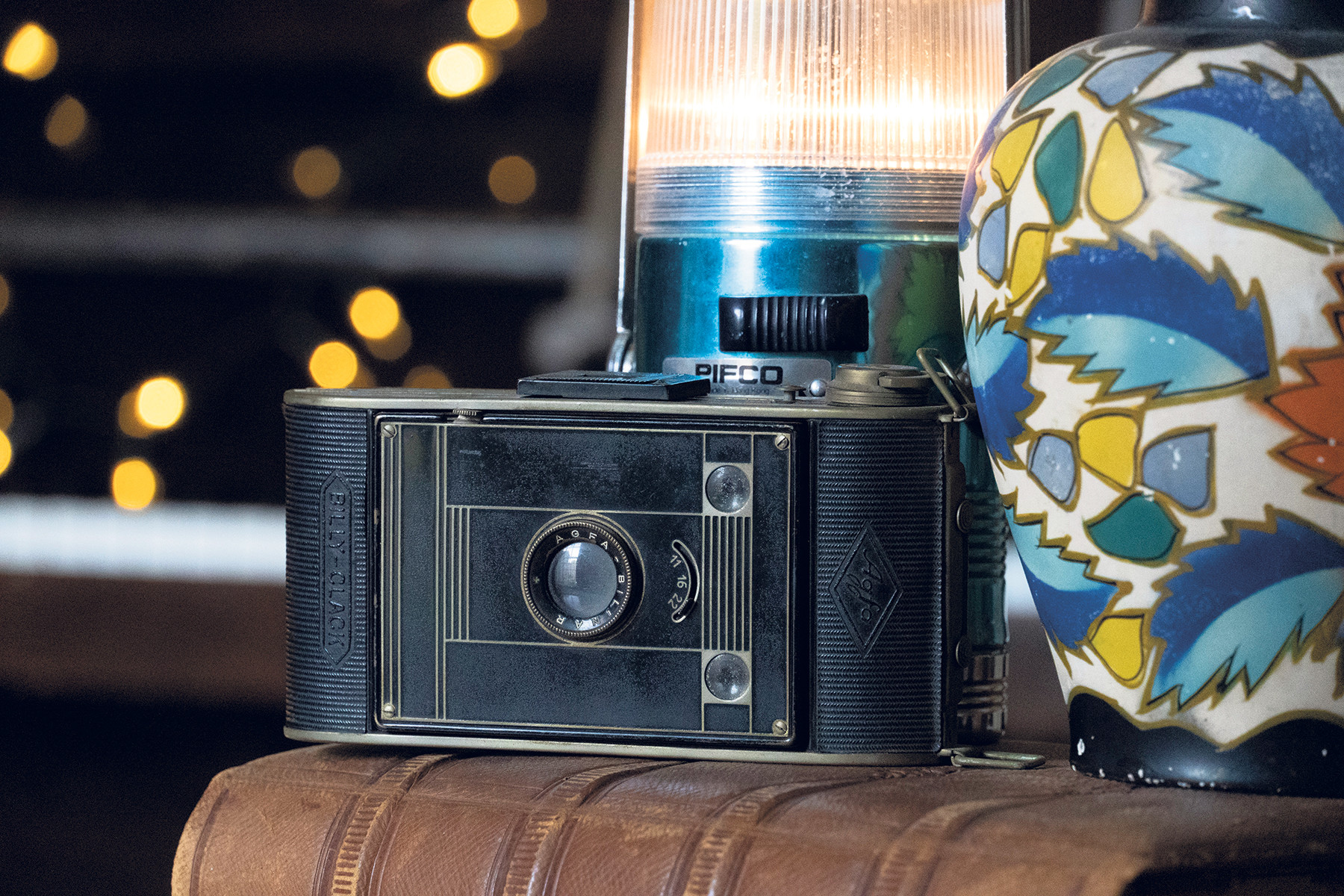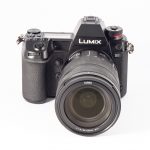
Sony A6400 test: spec-track-ular vlogger!
Posted on Sep 11, 2019
The A6400 was trumpeted as a vlogging camera, but its amazing AF means it has enormous appeal for stills shooters.
Sony’s A6400 is a mirrorless interchangeable lens camera with a 24-megapixel APS-C chip and a streamlined, rangefinder styled body. It replaces the A6300, sitting in between the more recently announced A6100 and A6600 in terms of spec. Outwardly, the body itself doesn’t add much on previous models and the chip is the same as in the A6300, but while that might sound underwhelming, the A6400 is noteworthy alone for its massively upgraded AF system that comes straight out of Sony’s flagship A9, along with its Bionz X processor. Using it with its kit 18-135mm f/3.5-5.6 OSS lens, we found out what it had to offer.
With the A6400, there’s really no other place to start than with its 425- point phase detection AF system’s performance. It is simply outstanding. Even with a ‘slow’ variable aperture lens like the 18-135mm the system is fast and accurate throughout its regular modes, but most interesting for taking Sony’s old subject-and eye-tracking modes and combining them into Real-Time Tracking AF. So set up in the right way, via the Face/Eye AF Set sub-menu, you can lock onto a subject with a half-press of the shutter and track their eye as they move about. Of course, this isn’t new, but the tenacity of the system was really surprising in a mid-range body like this.
In our testing, the subject’s eye was held in focus as they moved towards and away from the camera, then when they turned away, the mode changed to a regular subject tracking and resumed the eye tracking when they faced the camera again. Hit rate was near 100%, and the mix of modes also means you can shoot the subject turned as the camera isn’t trying and failing to find an eye. Unlike many systems, therefore, you can also switch to focusing on inanimate objects without physically changing the AF mode, and that means you rarely need to leave the mode at all. It would have been interesting to try it with some very fast lenses to test the accuracy, but if performance is the same as the A9, it’s likely to be near-perfect.
Like other Sony bodies, the A6400 was recently updated via firmware to include an Eye AF Animal option. This needs to be changed from ‘Human’ to ‘Animal’ within a sub-menu, which is a bit weird as humans are animals, but hey ho. Testing on dogs, I found the Animal mode a little less efficient than the Human version, though it was still very good, just more likely to lose the eye when the subject turned, or get distracted by other objects in the scene, presumably due to the wider variety of eyes it’s looking for.

Image The A6400 has a three-inch tilting touchscreen monitor that works well and provides a high-quality image.
Control layout is logical, and buttons and dials perform smoothly and positively
AF options are numerous, and include adjusting for the subject’s closest eye, and while the array of AF Area choices is initially bewildering (with many seeming to cross over with one another) fortunately you can turn most of them off within the AF sub-menu, so you only have to scroll through the ones you want. Another nice feature I noticed was that the display gives you a helpful explanation as to why something might be greyed out due to a clashing mode. For example, the Real-Time Tracking being greyed out if you’re in the wrong drive mode. That’s something I can see catching on.
Away from the AF, improvements on the A6300 are more limited, but that’s not to say the A6400 isn’t a very good camera in those areas. The 24-megapixel sensor might not have the resolution to deliver the ultimate detail some crave, but image quality is still very good, and complemented by the excellent dynamic range, exposure latitude and high ISO noise performance.
Confidence in the ISO 100-32,000 range means that for most subjects I just left it on Auto, wherein you can cap the range and the minimum shutter speed, too. So for instance, shooting in aperture-priority the system seemed to do a good job of sensing the focal length in use and increasing the shutter speed to cover it, basically giving you the reciprocal of the focal length as you’d normally hope to achieve. For instance, at the lens’s equivalent 200mm setting, it pushed the shutter to 1/250sec. This is handy considering there’s no in-body stabilisation and that does feel like an omission on a modern body like this. To get image stabilisation, you’ll need to invest more on the new A6600 or outgoing A6500 (though that lacks the excellent AF update), or make sure you’re using Sony’s OSS lenses.
The A6400 also gains an intervalometer function for time-lapse shooting, where previously it required Sony’s Play Memories app. There are lots of decent options within that mode, including using the electronic shutter to save on shutter actuations.
At launch, Sony made a lot of the A6400’s tilting touchscreen, which can be pushed upwards through 180º for selfies and vlogging. If you’re into that, its usefulness is undeniable, though the screen will be awkwardly obscured if you want to have a mic fitted to the hotshoe, as most do. I mainly found it useful for high and low angle shooting. The touchscreen aspects are useful in AF, wherein you can very quickly position a small AF area while shooting, and this works well, though if you’re a pointy nosed, left-eye shooter like me you may occasionally do it with your nose. However, I couldn’t make the touch function extend to the main menus or the icons and settings in the quick menu brought up by the Fn button, which is a bit weird.
I found the 2.36M-dot EVF performed fine, but while as mainly a DSLR user the wysiwyg functions of exposure are appreciated, the quality of the image in the A6400’s EVF didn’t seem all that refined to me. It’s certainly not up there with the performance of the full-frame Nikon Z and Panasonic S cameras. It also lagged a bit when brought up to the eye, so if you’re looking for something to break the spell of shooting with an optical finder, this may not do the trick. I also found a slowness in changing exposure settings, but this can be speeded up by switching off the animations that go with them.
In terms of handling, I found the A6400 a mixed bag. Its stubby little grip will be fine for some, but it’s not big enough for me, and I think anyone who’s used to a more sculpted grip may feel the same. Though it was fine with the lightweight 18-135mm, it would be progressively more difficult to hold if heavier lenses were added. Button placement is okay, and there is a good level of customisation, but what the A6400 really needs is a front control dial; using the top plate dial and the ring that surrounds the directional pad feels quite unbalanced, needing a shift in hand position to do it. If you’re coming from a compact or similar small body it’s not going to seem like a problem, but from a DSLR or CSC, the A6400 feels a bit like you’re holding onto a margarine tub.
Shooting speed on the A6400 is a healthy 11fps in its Continuous Hi+ mode, which isn’t up there with the fastest bodies, but pretty aggressive all the same. And that’s all with AE and AF tracking. If you need more frames per second, you may need to ask yourself exactly why, as it’s plenty for sports and wildlife. You can keep 11fps up for 99 Extra Fine Large JPEGs or 44 Raws and it doesn’t lock up, but instead gives a countdown of the frames it’s writing, letting you extend shooting in short, controlled bursts. Arguably this could be faster if the A6400 supported UHS-II cards, but it doesn’t. Battery life tops out around 360 shots if you’re using the viewfinder, which is okay, but will mean investing in another battery or two if you’re planning to use the camera for an extended period between access to power. It can be charged by USB, which is very handy. A good performance overall.
Performance: ISO

Click the images to see a larger view
To test the A6400’s performance throughout its ISO range we set up a simple scene with lots of highlights, shadows and colours. Images were shot in Raw and processed with no noise reduction, then compared. Inspecting images at 100% they were pleasingly smooth up to around ISO 1600. From ISO 3200 to 6400, noise began to creep into the shadows, but not offensively, just taking on a more grainy look. Even the top end of 25,600 and 32,000 just have a fast film look and I wouldn’t be put off using them, though colour and sharp detail do suffer a little. It’s a great ISO performance.
Performance: exposure latitude

Click the images to see a larger view
To test the A6400’s Raws, we shot a sequence of images, starting off with the as-metered exposure, then biasing it by +/-4EV. Files were then corrected by the corresponding amount during Raw processing. Starting with the underexposed shots the A6400 performed well, showing little difference between the as-metered shot and images corrected at from -2EV. At -3EV noise was more pronounced and images corrected from -4EV were a lot rougher. With regards to the overexposed files, results were good up to +3EV, though inevitably very bright highlights were difficult to return to detail. At +4EV, the image began to grey and posterise a little.
Verdict
Despite a few minor handling issues and the lack of in-body image stabilisation, the A6400 is a great camera. Its image quality is excellent, and it has a very healthy burst rate of 11fps, but it’s the A6400’s Real-Time Tracking AF that really sets it apart. The performance is spookily good, and I soon found myself sticking to that mode most of the time. At £1299 with the 18-135mm OSS lens it’s a complete package, and a great everyday or travel camera.
Pros: Amazing AF, versatile features and great value
Cons: Minor handling issues, no in-body IS
| Features | 23/25 | Pretty much everything that the enthusiast photographer could ask for |
| Handling | 20/25 | A compromised body shape and underwhelming EVF, but mainly good and with plenty of customisation |
| Performance | 23/25 | 11fps is great, but the face and eye tracking AF is the real star |
| Value for money | 23/25 | Well priced against its rivals and includes lots of features from the £3400 A9 |
| Overall | 89/100 | This may be the mirrorless camera to hook you once and for all |
For more information, please visit the Sony website.
As featured in issue 70 of Photography News.
























